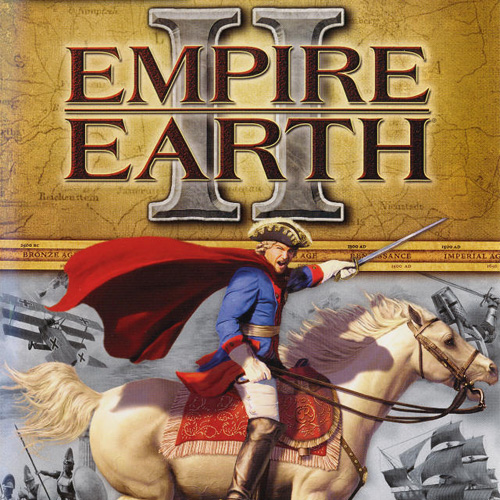

Take, for example, a big, slow-paced land-based game using primitive weaponry. It isn't just a matter of limiting with epochs or what units players can use, the very feel of the game is different. The difference with Empire Earth II is just how deep the customization goes. Of course, many RTS games have customization options. If a gamer can think of an RTS gameplay style, odds are the customization options of Empire Earth II can handle it. The impact of this much customization can't be underestimated. Everything from which epochs will be covered, to the game pace to skill handicaps to a bunch of "quickstart" options are available to the player. There's also a whole host of customization options that allow players to choose the types of games they want to play. In my multiplayer games, the level of underhanded dealing, glad-handling and out-and-out backstabbing and betrayal made the United Nations look honorable - and I've never had more fun being devious in my life. That's because these tools add a whole other strategic "meta-game" of Machiavellian maneuvering that goes on in the player's head completely separate from what's happening on the field. Both tools are incredible innovations that really should become standard features for real-time strategy games from now on. The game also sports a new "War Planner" system that lets players in multiplayer send strategically marked maps back and forth and a diplomacy system that lets players make temporary alliances and trade resources, border rights, and line-of-sight information. This might be enough for most games, but when you layer on top of that unique units for each civilization and special regional and civilization powers, the combinations become almost overwhelming. Naval and air units have similar "RPS" systems in place. Light artillery is good against heavy mounted troops, which in turn are good against light infantry and so on, until you get around to light mounted, which are good against light artillery again. Basic ground troops, for example, have a rock-paper-scissors relationship divided up into the different types of units. Having all this stuff to play with means that Empire Earth II reaches strategic heights it will take gamers years to fully explore.

The game allows players to field over 300 types of military units covering 15 time periods along with 15 different civilizations to play with, each with its own strengths and weaknesses, special powers, and unique units. Empire Earth II takes this idea and runs with it, piling feature upon feature upon feature. The underlying conceit of the Empire Earth franchise has always been "epic" - the idea that players would be able to take a civilization from hunter-gatherers using stone knives and bear skins all the way to a futuristic society that uses fusion-powered mechs to fight its wars. If you can get over the initial learning curve - which can be downright mean at times - you'll find a multiplayer game that could keep you hooked for years to come. Mad Doc is led by Ian Lane Davis, an accomplished game designer with a doctorate in artificial intelligence.Įmpire Earth II is one of the deepest and most customizable RTS games I've ever seen.
#EMPIRE EARTH 2 ON WINDOWS 10 SOFTWARE#
Civilizations can now construct walls, bridges, and roads that offer appropriate bonuses to travel, trade, and defense.ĭeveloper Mad Doc Software previously worked Legends of Aranna, the stand-alone expansion for the original Dungeon Siege, as well as Art of Conquest, the official add-on for the original Empire Earth. Other features, such as picture-in-picture command windows, a "Citizen Manager" feature, and changing weather are also designed to enhance the experience of striving for global dominance. While keeping with the theme of military, economic, and political domination throughout the ages of history, Empire Earth II strives to be bigger than its predecessor in nearly every way, offering more modes, larger maps, more than 275 structures, and over 350 units available unit types. The game offers three built-in single-player campaigns: Korean (early epochs), German (middle epochs), and American (late epochs). Free-form and multiplayer gamers can choose their factions from a wide selection - German, British, Roman, American, Greek, Egyptian, Turkish, Babylonian, Korean, Japanese, Chinese, Incan, Aztec, or Mayan - each designed to portray a distinct cultural identity. Real-time strategists lead humble, stone-age tribes to conquer the world, through 15 epochs spanning 12,000 years of humankind's past, present, and future, in this Mad Doc Software sequel to Stainless Steel Studios' critically acclaimed Empire Earth.


 0 kommentar(er)
0 kommentar(er)
